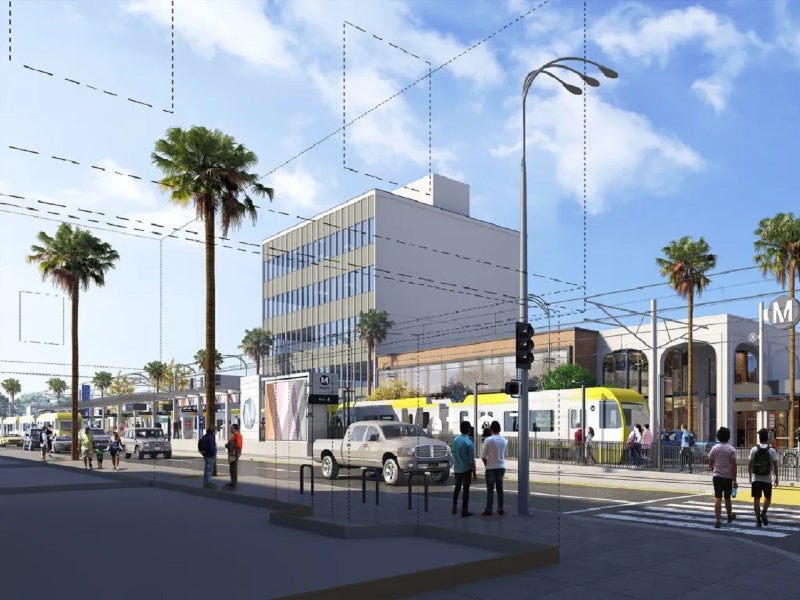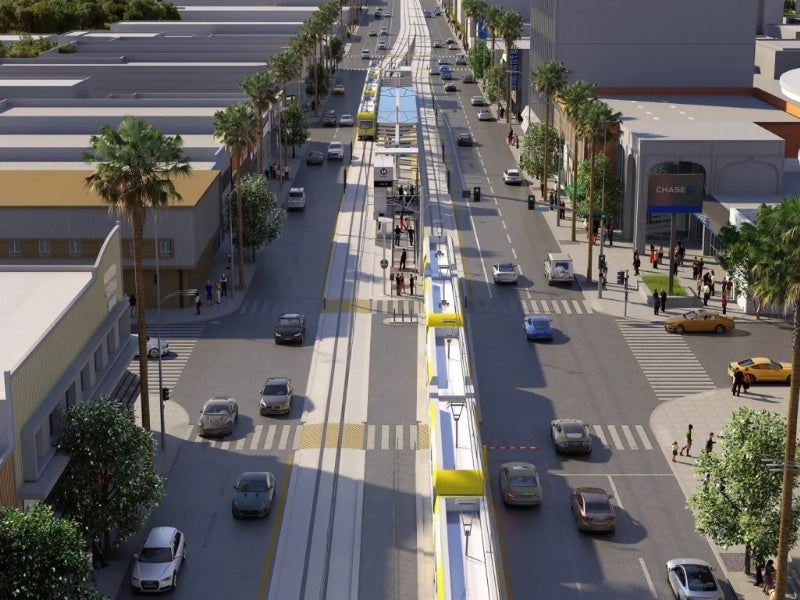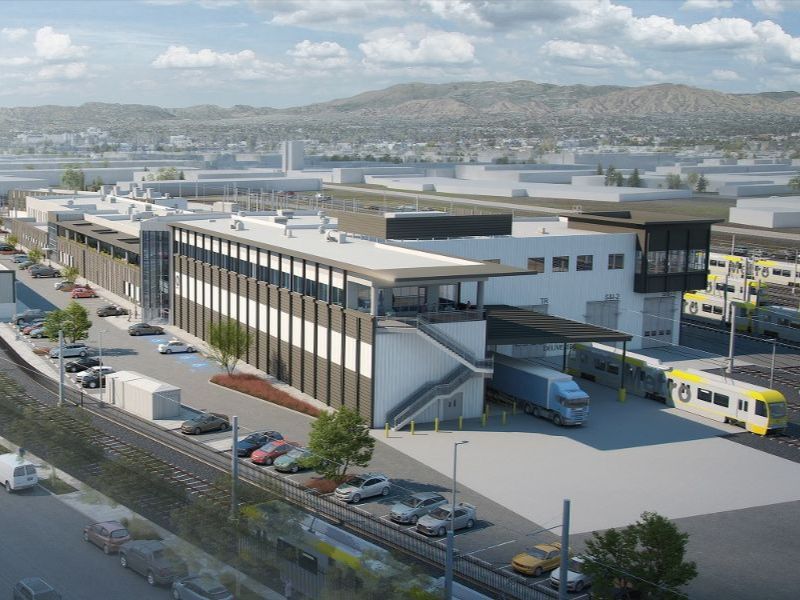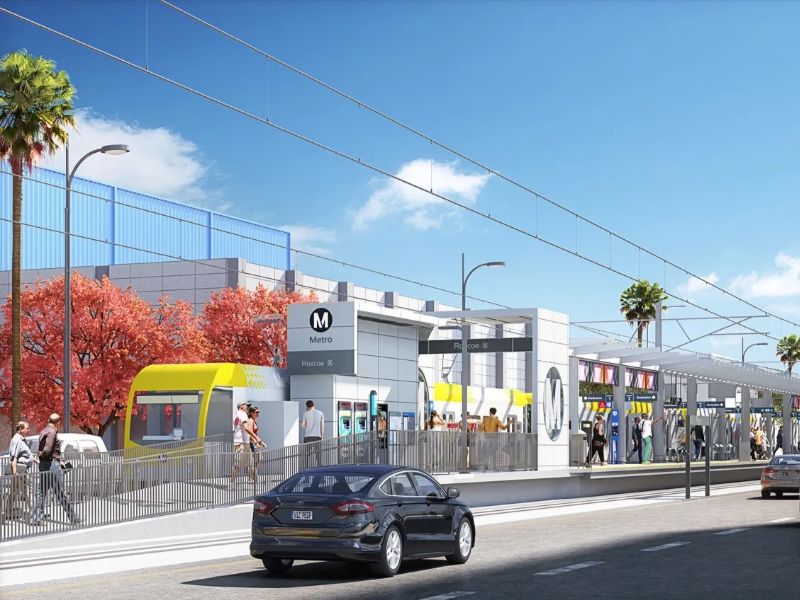The East San Fernando Valley light rail project is a light rail transit (LRT) system being developed in Los Angeles County, California, US, by the Los Angeles County Metropolitan Transportation Authority (LACMTA), also known as LA Metro.
The LRT project is expected to improve the public transit service in the San Fernando Valley. It will connect the Metro G (Orange) line in the south to the Sylmar/San Fernando Metrolink station in the north.
The project is expected to provide reliable transportation and increase service efficiency, speeds and passenger throughput in the region.
It is part of LA Metro’s 28 Plan, a programme that aims to complete 28 infrastructure projects leading up to the 2028 Summer Olympics and Paralympics to be held in Los Angeles.
The ground-breaking event for the utility relocation work related to the project took place in December 2022. The project is being implemented in phases with a total estimated investment of $3.63bn. The first phase of the LRT system is expected to begin operations between 2028 and 2030.
Objectives of East San Fernando Valley light rail project
The project is expected to fulfil key objectives such as increasing passenger mobility and connectivity between the main transit hubs in the region, improving north-south connections and providing an environmentally friendly transport option by reducing carbon emissions in the project area.
The LRT system will also address the problem of congestion on the roads, meet the increasing demand for travel and improve service efficiency.
Public consultation and feedback
A study completed in December 2012 evaluated 26 build alternatives, as well as upgrades to the existing transit system and no-build alternatives.
The LRT system emerged as a strong favourite following public consultations in 2013. The proposal was then modified and refined in line with the feedback received from local people and other stakeholders. In 2018, the modified LRT was named as the preferred transit alternative.
New station in the East San Fernando Valley
The first phase of the light rail project will be 6.7-miles-long (10.7km) and will have 11 stations, connecting Van Nuys, Panorama City, Arleta and Pacoima along Van Nuys Boulevard.
The second phase will see a 2.5-mile (4.02km) extension from Pacoima to the Sylmar/San Fernando Metrolink Station. The total distance, including the extension, will be 9.2 miles (14.8km) while the number of stations will be 14.
These stations will be located at Sylmar/San Fernando Metrolink, Maclay, Paxton, Van Nuys/San Fernando, Laurel Canyon, Arleta, Woodman, Nordhoff, Roscoe, Van Nuys Metrolink, Sherman Way, Vanowen, Victory, and Van Nuys Metro Orange Line.
The stations are expected to be built at intervals of 1.2km. They will be designed to comply with the accessibility standards of the American Disabilities Act (ADA).
The stations’ design will incorporate local artwork reflecting the surrounding communities. The platforms will be installed with shading devices to protect passengers from heat, and their canopies will be designed with sustainable features. The stations will also be designed to accommodate the installation of photovoltaic solar panel infrastructure.
Each platform will have a length of 270ft (82.3m) and a height of 3.25ft (99cm). Side platforms will be 12.2ft-wide (3.7m), and centre platforms 16ft-wide (4.8m).
Speed and passenger capacity
LA Metro plans to operate 34 LRT vehicles along the route, expected to be similar to those being operated across the existing Metro LRT system.
Each vehicle will have a total length of 270ft (82.3m), comprising up to three 90ft (27.4m) rail cars. The LRT vehicles will run at speeds of 56km/h, which is the speed limit of the adjacent roadway, while the maximum operational speed of the vehicles within the Metro right-of-way adjacent to San Fernando Road will be 104.6km/h.
The three-car units will be able to carry up to 400 passengers, approximately 230 of whom will be seated. The trains will have a driver’s cab at both ends to allow them to run in either direction.
Power supply
The LRT vehicles will be powered by an electrified overhead contact system (OCS). 14 traction power substations (TPSS) units, including 11 in the first phase, are proposed along the route to provide direct current to the LRT vehicles.
A new storage facility
A new maintenance and storage facility (MSF) is planned on 25 acres (10,117m²) of land on the west side of Van Nuys Boulevard. The site is located between Keswick Street, Raymer Street and Pacoima Wash.
The facility will be used to store the LRT vehicles when they are not in operation and for regular internal and external cleaning, as well as light and heavy maintenance and repair. It will also be used for operational and administrative functions while serving as a home base for operators.
Financing the project
In May 2022, the Federal Transit Administration (FTA) issued a letter of intent (LoI) to grant more than $900m in future federal funds for the East San Fernando Valley Light Rail Transit project. The final agreement for the grant is expected in 2024, subject to the fulfilment of certain conditions in the LoI.
In December 2022, LA Metro submitted an application for funding from the State of California for three light rail projects, including the East San Fernando Valley Transit Corridor. The company sought $600m for the LRT project under the state’s Transit and Intercity Rail Capital Program (TIRCP). The funding request for the project was approved by the California State Transportation Agency (CalSTA) in February 2023.
Construction and management
Gannett Fleming, a US-based architecture, engineering and construction firm, was selected by LACMTA for the design and planning of phase one of the East San Fernando Valley LRT project. The company is also designing the new maintenance and storage facility for the project.
Arcadis and its joint venture (JV) partner Mott MacDonald have been appointed to provide construction management support services for the project.







